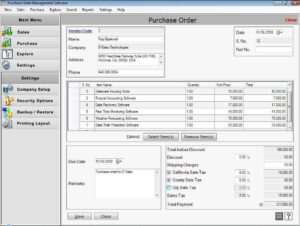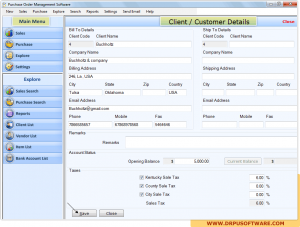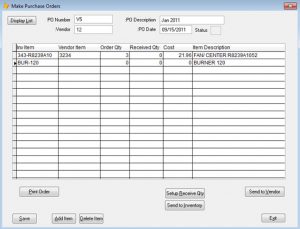Overcoming Implementation Challenges: Tips for a Smooth Transition to Cloud-Based Purchase Order Software

Introduction
Transitioning to cloud-based PO software can revolutionise how businesses manage their procurement processes. However, implementing such a system comes with its own set of challenges. In this article, we’ll explore common hurdles faced during the transition and provide actionable tips to ensure a seamless integration.
Understanding the Importance of Cloud-Based Purchase Order Systems
Before delving into implementation challenges, it’s crucial to grasp the significance of cloud-based purchase order systems. Unlike traditional on-premises solutions, cloud-based PO software offers unparalleled flexibility, scalability, and accessibility. With cloud-based systems, businesses can streamline their procurement workflows, enhance collaboration, and gain real-time insights into their purchasing activities.
Common Implementation Challenges
Despite the numerous benefits, transitioning to cloud-based PO software can pose several challenges for organisations. Some of the most common hurdles include:
- Lack of IT Infrastructure Preparedness: Many businesses may lack the necessary infrastructure to support cloud-based systems, leading to compatibility issues and performance concerns.
- Data Security and Compliance: Ensuring the security of sensitive procurement data and compliance with regulatory requirements can be challenging when migrating to the cloud.
- User Resistance and Training: Resistance from employees accustomed to traditional procurement methods, coupled with the need for comprehensive training on the new system, can hinder adoption.
- Integration with Existing Systems: Integrating cloud-based PO software with existing ERP systems, accounting software, and other business applications may present technical complexities.
Tips for a Smooth Transition
While overcoming implementation challenges may seem daunting, careful planning and strategic execution can ensure a smooth transition to cloud-based PO software. Here are some actionable tips:
- Conduct a Comprehensive Needs Assessment: Evaluate your organisation’s procurement requirements, existing infrastructure, and budgetary constraints to determine the most suitable cloud-based solution.
- Ensure Data Security and Compliance: Prioritise data security and compliance by selecting a reputable vendor with robust security measures in place. Implement encryption protocols, access controls, and regular audits to safeguard sensitive information.
- Provide Extensive Training and Support: Invest in comprehensive training programs to familiarise users with the new system and address any concerns or resistance. Offer ongoing support and resources to facilitate a smooth transition.
- Plan for Seamless Integration: Collaborate closely with your IT team and software vendors to ensure seamless integration with existing systems. Conduct thorough testing and troubleshooting to identify and address any compatibility issues.
- Monitor Performance and Adapt Accordingly: Continuously monitor the performance of the cloud-based PO system and solicit feedback from users. Identify areas for improvement and adapt your processes accordingly to maximise efficiency and ROI.
Conclusion
Transitioning to cloud-based PO software is a strategic decision that can yield significant benefits for businesses. By understanding and addressing common implementation challenges proactively, organisations can navigate the transition successfully and unlock the full potential of cloud-based procurement solutions.







